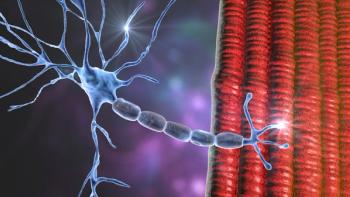
Tardive Dyskinesia Facts and Figures
Numbers don’t tell the whole story, but gaining a better sense of the frequency, risks, and impact on patients’ quality of life can help improve treatment efforts and enhance outcomes.
BRIEF COMMUNICATION
As part of
In a recent
As new drugs have become available to treat patients with tardive dyskinesia, effective and safe application has been limited by knowledge gaps and misunderstanding.
Numbers don’t tell the whole story, but gaining a better sense of tardive dyskinesia’s frequency, risks, and impact on patients’ quality of life can help improve treatment efforts and enhance outcomes.
The following facts and figures provide a brief overview.
A look at the big picture
Significance questioned
Tardive dyskinesia’s relative significance as a clinical problem and the need for treatment have been questioned since the disorder was first recognized, according to Stanley N. Caroff, MD, Perelman School of Medicine, University of Pennsylvania, in a recent
Some key statistics:
• The cumulative incidence is about 4% to 5% annually; the prevalence rate is 20% to 30%.
• Younger patients are at risk and may be particularly susceptible to more generalized and dystonic movements, but older age is a major risk factor.
• The annual incidence in patients older than 45 years is 15% to 30% after 1 year of treatment; the prevalence rate is about 50% to 60%.
• Tardive dyskinesia has been linked with female gender, race, higher ratings of negative symptoms and thought disorder, greater cognitive impairments, acute drug-induced movement disorders, substance abuse, and diabetes.
• Older adults and patients with schizophrenia may be at greatest risk, but patients with mood disorders are at risk and have been considered to be at high risk.
• Regardless of diagnosis, tardive dyskinesia is not rare and anyone exposed to treatment with antipsychotics is at risk.
First- vs second-generation antipsychotics
• A 6- to 12-fold reduction in tardive dyskinesia risk was found with newer second-generation antipsychotics (SGAs) compared with haloperidol.
• The relative risk of tardive dyskinesia with SGAs is significantly less on average than that with older first-generation antipsychotics. The risk associated with clozapine is probably least.
• The SGAs retain some risk. No currently available antipsychotic is risk-free.
• Additional risk factors for the development and persistence of tardive dyskinesia are longer duration of antipsychotic treatment and greater cumulative drug doses.
Objective severity and functional impact
The conventional wisdom that tardive dyskinesia is unimportant may be the result of patient selection bias or the lack of rigorous investigations, Dr Caroff noted. In the early reports of older patients with chronic illnesses showing indifference, up to two-thirds seemed unaware of tardive dyskinesia movements. However, in a recent survey of outpatients with possible tardive dyskinesia, 70% to 80% were aware of their movements and 50% to 60% felt self-conscious or embarrassed by them.
As clinicians assess the seriousness of tardive dyskinesia and the need for treatment, they should consider the objective severity of the movements and the functional impact on patients, Dr Caroff suggested.
He added that correlations between tardive dyskinesia and impaired cognition, poor response to treatment, risk of relapse, and other factors are confounded by the effect of the underlying psychiatric illness-patients with severe psychoses and poor prognoses receive higher doses of antipsychotics for longer periods with poor adherence, resulting secondarily in a greater incidence of tardive dyskinesia.
Adverse effects on quality of life
RealâWorld Evaluation Screening Study and Registry of Dyskinesia in Patients Taking Antipsychotic Agents (RE-KINECT)
• Close to 30% of patients who had possible tardive dyskinesia reported moderate-to-extreme problems in performing their usual activities (eg, work, housework, and leisure activities) compared with just under 20% of patients who did not.
• Almost half of patients who had possible tardive dyskinesia experienced moderate-to-extreme anxiety or depression compared with just under 40% of patients who did not.
• Just more than 20% of patients who had possible tardive dyskinesia reported moderate-to-extreme mobility problems compared with about 12% of patients who did not.
• Utility scores in a regression model showed poorer perceived QoL in patients who had possible tardive dyskinesia and reported “a lot” of severity or “a lot” of impact on daily activities compared with patients who did not.
“The RE-KINECT study provides valuable insights into the real-world and personal impact the involuntary movements from possible tardive dyskinesia may have on the everyday life of a patient,” said Dr Caroff. “The findings from RE-KINECT are valuable for informing treatment decisions in clinical practice and demonstrate the importance of including assessments from patients and caregivers on the severity and social impact of the stigmatizing movements of tardive dyskinesia.”
References:
1.
2.
3.
4. Caroff SN.
5.
Newsletter
Receive trusted psychiatric news, expert analysis, and clinical insights — subscribe today to support your practice and your patients.




